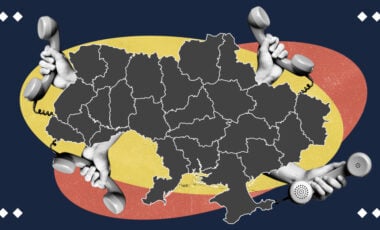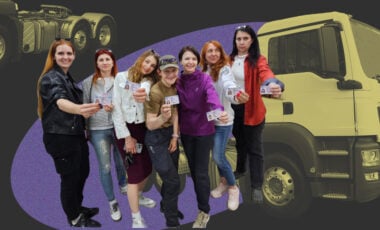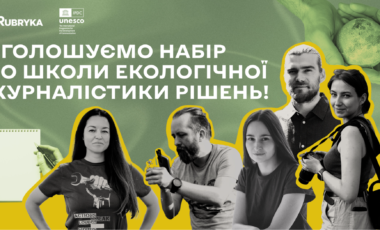Without Leopards, but with substantial support: why Ramstein-8 went well for Ukraine

The idea of coordinating the efforts of partners and friends of Ukraine was born at the beginning of a full-scale invasion. The first meeting of the so-called contact group on the defense of Ukraine was held at the end of April 2022. Since then, this is already the eighth meeting, on which many hopes were placed regarding the important decision to supply tanks to Kyiv. But that will apparently happen later. However, regardless of this, there are certain reasons for optimism.
What is international aid, particularly military aid, in the first place? First, it's to assure of support that precedes the transfer of a certain type of weapons and equipment. It was for the development of joint approaches and coordination regarding the capabilities of our partners that the mechanism, which came to be called "Ramstein," was created. It should be understood that there is a possibility that meetings will be organized less often than at the beginning since Ukraine received and receives a large amount of aid.
Moreover, on New Year's Eve, another trend took hold. Bilateral negotiations regarding Ukraine's needs intensified again. On the one hand, this opens up opportunities for a more open dialogue, which later brings results in the form of tanks from Poland and air defense systems from Lithuania. And a few days before that, Paris announced the supply of French AMX-10RC light tanks.
Secondly, the Commander-in-Chief of the Armed Forces of Ukraine, Valerii Zaluzhnyi, stated that tanks in large numbers are a guarantee of counteroffensive operations for Ukraine. After that, several interpretations were voiced — whether this would be enough for victory or just for the operation to liberate territories in one direction.
Back in the summer, Pengaton stated that taking into account the tanks captured in the battle against the Russians and left by them during their retreat, Ukraine had an advantage in this dimension. But Zaluzhnyi still meant Western tanks, not Soviet ones. Globally, the situation regarding the allocation of any military aid has not changed. The West does not want samples of its aid to fall into the hands of the russians. Perhaps, Germany wants to ensure that the tanks will not be used immediately on the contact line.
Thirdly, the talk that Germany will not provide tanks to Ukraine until certain conditions are met (and the supply of Abrams tanks by the United States is often associated with this) has every right to receive unequivocal reactions from Ukrainians. Otherwise, Berlin will continue to believe that if there is no corresponding reaction, then Kyiv does not really need these weapons. This is really not a kindergarten, and Ukrainians pay for these "conversations" with their lives. But this situation with the tanks only once again allows the official Kyiv to see that not everyone has been convinced yet.
In addition, to put it mildly, it is incorrect to compare American and German aid: during the work of the Biden administration, that is, in exactly two years, the United States provided military aid worth $27.5 billion, not including what was announced as future packages, and Germany provided weapons and ammunition for 2 billion euros in 2022 and predicted 2.2 in 2023, respectively.
Germany still hesitates about its role in supporting Ukraine but does not understand that the fate of aid from other countries may depend on such critical decisions. Ukraine has repeatedly seen this in the example of aid from the United States, and now this situation has happened again with tanks. One country starts the process, and others join.
The absurdity of the situation is compounded by the fact that Germany's NATO partners are ready to transfer tanks to Ukraine and are only waiting for Germany's consent to do so. It is not surprising that the word scholzing already appears, which means constant hesitation and finding reasons not to do something. Therefore, Ukraine should use the authority of Berlin's other NATO partners so that they, in turn, lobby for Kyiv's interests.
I cannot but agree with Taras Chmut, the head of the most well-known fund to help the armed forces, "Return Alive," that one of the conditions for obtaining weapons and ammunition for them is the ability not only to own these weapons but to service them, including repairs. And the Armed Forces prove it almost daily. It should also not be forgotten that the needs of the Armed Forces many times exceed the capabilities of our partners. And this is the so-called dilemma of the donor and the recipient when the capabilities of the donor are many times higher than the needs of the recipient state.
Fourth, the main success of the Ramstein-8 meeting is that coordination continues. And therefore, regardless of even the decision regarding tanks, Ukraine will receive new weapons and ammunition. In addition, new deliveries in the form of Bradley armored personnel carriers were announced at the beginning of January. After Ramstein, Ukraine will receive another 58 such vehicles. It should not be forgotten that all this is happening against the background of statements about a possible repeated attempt by the russians to capture Kyiv or preparations for a counteroffensive in Donbas. And the CIA Director, the former US ambassador to russia, made a secret visit to Kyiv. Before that, he was in Kyiv only on the eve of a full-scale invasion to pass on intelligence about russia's plans.
Based on this, in fact, the results of the meeting of the contact group confirmed Ukraine's receipt of the following assistance:
- Great Britain will provide 14 Challenger 2 tanks, 30 AS90 self-propelled artillery units, 100 units of armored vehicles, including the FV430 Mk3 Bulldog armored personnel carrier, drones, and 100,000 artillery shells.
- Among other things, Estonia will provide 155-mm FH-70 howitzers, as well as ammunition, for a total of 113 million euros.
- Canada has already purchased the NASAMS system for Ukraine.
- Germany and the Netherlands will provide one battery each for Patriot air defense systems.
- Denmark is ready to provide 19 155 mm CAESAR self-propelled artillery units.
- Latvia will provide Ukraine with Stinger air defense systems, machine guns with ammunition, two M-17 helicopters, and drones.
On the eve of the meeting, the United States announced a separate new aid package, which included: 8 Avenger anti-aircraft missile systems, 59 Bradley infantry fighting vehicles, 90 Stryker armored personnel carriers, 53 vehicles with protection against mines and ambushes, as well as ammunition for HIMARS systems.
Thus, the idea of providing Ukraine with additional weapons until spring, before a possible counteroffensive of its own or before repelling a russian re-attack, will continue. The Minister of Defense of Ukraine, Oleksii Reznikov, assured that during the contact group meeting, there were also cases where there was no talk of certain assistance, and therefore there would be no public announcements.
It should also not be forgotten that the United States followed a similar approach in the spring. So, given that almost a year has passed since the full-scale invasion, and Western partners are also using their reserves to help Kyiv, the near-term aid is predicted to be less announced. At the same time, the refusal to provide the same tanks to Ukraine was not publicly disclosed, so it is quite likely that such a decision will be made in the near future after the resolution of certain tripartite issues regarding the sequence of deliveries.


















































